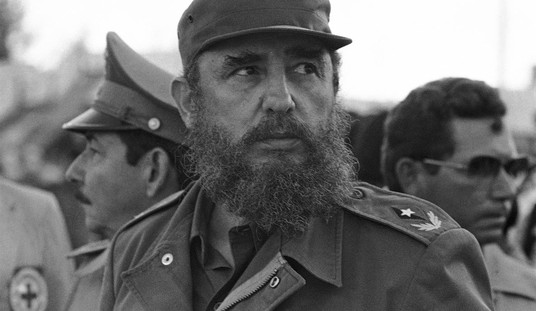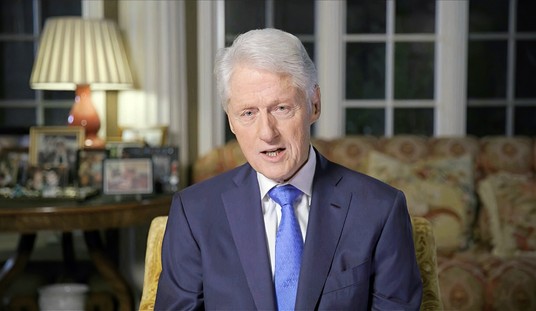There’s a type of journalism that doesn’t bother waiting for the facts to come true. It prefers projections. Estimates. Extrapolations. These numbers don’t have to be proven; they only have to frighten. That’s the kind of story ABC News recently ran, claiming that millions of people will die because the Biden-era version of USAID has been folded under the U.S. State Department.
The death toll? Plucked from a Lancet study, modeled through decades of foreign aid data, then offered up with all the nuance of a headline designed to panic the casual reader. No questions asked. Just trust the math.
This isn’t news. It’s theater. And the star performer is once again The Lancet, a medical journal with a long history of playing politics dressed in a lab coat.
ABC’s Morality Math
According to ABC News, “millions of people may die due to the State Department takeover of USAID’s global health programs.” The source? A brand-new study from The Lancet claims the loss of direct USAID involvement could lead to between 1.8 million and 2.5 million additional deaths every year through 2030. They even went further, projecting a cumulative loss of 14 million lives.
Using models, the authors estimated the impact of USAID funding on deaths from 2001 to 2021. The team then used models to estimate effects up to five years from now.
The study found that more than 91 million deaths were prevented by USAID funding to low-income and middle-income countries over the 21-year study period, including a 65% reduction in mortality from HIV/AIDS and a 51% reduction from malaria.
Forecasting models not only predicted millions of additional deaths due to the steep cuts, but also that one-third of those deaths are projected to occur in children younger than age 5.
But ABC’s problem wasn’t quoting a study.
It was swallowing it whole.
No challenge to the underlying assumptions. No scrutiny of the methodology. No acknowledgment that, in reality, most aid programs are still funded; many are simply managed differently, and others are potentially more transparent now under State Department oversight.
In other words, the programs didn’t disappear. But nuance did.
The Lancet’s Familiar Trick
If The Lancet were a first-time offender in this sort of hysteria modeling, you might forgive the overreach. But they’ve been here before. In 2004 and again in 2006, The Lancet published estimates of deaths in Iraq that far exceeded all other international tallies. The second study claimed more than 650,000 excess Iraqi deaths as a result of the war, a figure almost ten times higher than what Iraq’s own Ministry of Health estimated.
Analysts across the spectrum challenged it. Critics pointed to opaque data collection, vague sampling techniques, and an apparent refusal by The Lancet to allow open peer review of its raw figures. But the number stuck. It didn’t matter whether it was accurate. It was useful.
And that’s what we’re seeing again now. A projection dressed up as science, repeated uncritically by a media outlet with no interest in verifying it, only in weaponizing it.
The Methodology Mirage
Let’s not pretend the figures were a solid measurement. The Lancet didn’t count 14 million bodies. They built a predictive model. They examined past correlations between foreign aid and mortality rates, then forecasted the potential consequences if USAID’s contributions slowed, shifted, or ceased entirely.
But here’s what matters: all of it depends on worst-case assumptions that no other nations step up to fill funding gaps. No private foundations adjust their programs, and no alternative institutions step in to fill the gap. That every current initiative is irreplaceable, that death follows immediately, with no lag, and no resistance from local governments, NGOs, or health workers.
In short, the model relies on a complete vacuum. No diplomacy. No adaptation. No innovation. Just a giant crater where foreign assistance used to be.
Real life doesn’t work that way.
Journalistic Accomplices
ABC News doesn’t get to hide behind the passive act of reporting. It made editorial choices, framing the USAID change as a harbinger of death. It never called global health officials with opposing views. It didn’t challenge the numbers. It didn’t investigate how much funding is still active. And it never asked the obvious question: why are so many media organizations so eager to find new ways to lay future deaths at the feet of the current administration?
That question answers itself. For outlets like ABC, moral panic is more valuable than careful analysis. Especially if the target is a political opponent, they’ve been itching to wound since January.
It’s Always “Millions”
Something is telling us that the number “millions” keeps appearing in these attacks. Millions died because of COVID mismanagement. Millions are dying from climate change. Millions will die without abortion access. Millions more, now, from the reorganization of foreign aid.
These aren’t statistics. They’re rhetorical weapons. They’re designed to scare, not explain. If ABC were interested in what’s actually happening on the ground, they’d ask: how many programs are still active? How many have been reassigned or adjusted rather than canceled? How many nations receiving aid have expressed concern about the change?
None of those questions cut. Only the death toll did.
From COVID to Kabul to the CDC
The Lancet’s credibility problem didn’t begin with Iraq, and it didn’t end there. During the COVID pandemic, the journal was one of the first to publish the now-infamous Daszak letter, preemptively discrediting the lab leak theory. It also dragged its feet on reviewing Chinese-sourced data, praised lockdown policies in Western democracies while downplaying the devastating toll those same policies had on the developing world, and used its editorial section as a bullhorn for ideological goals, not scientific ones.
It wasn’t alone in that. But it was loud. And it was consistent.
And now, when a policy shift occurs, one that reshuffles bureaucratic authority rather than slashing funding or ending partnerships, the same Lancet comes running with a model predicting mass death.
And the same media outlets run the headline.
Reality Isn’t a Spreadsheet
The aid world is complicated. Programs get paused, reviewed, and redirected constantly. Partnerships come and go. Contracts are renegotiated. Not every dollar leads to a life saved, and not every bureaucratic shift results in catastrophe. Some reorganizations streamline results and reduce waste.
But to suggest that one agency’s restructuring will lead to a body count equivalent to a second Holocaust is absurd. It's worse than bad science. It's propaganda in decimal form.
Why It Matters
Because once again, we’re watching the death of credibility in slow motion. The public doesn’t distrust experts because they hate knowledge.
They distrust them because they remember.
They remember Iraq. They remember COVID. They remember when the experts told them Hunter’s laptop was Russian disinfo when lockdowns wouldn’t last more than two weeks when inflation was transitory, and when pulling out of Afghanistan would be “orderly.”
Now, they’re told that the reclassification of an agency office will kill 14 million people.
They’re not buying it anymore. And they shouldn’t.
Final Thoughts
The Lancet stopped being a purely scientific journal a long time ago. It became an activist publication with a medical veneer.
And ABC News stopped being a neutral observer even longer ago, content to serve as a megaphone for whoever promises the most clicks and the most outrage.
Together, they’ve built a narrative in which numbers no longer describe reality. They predict it. Then, condemn those who don’t act accordingly.
That’s not public health. That’s manipulation. And it ought to be exposed for exactly what it is.










